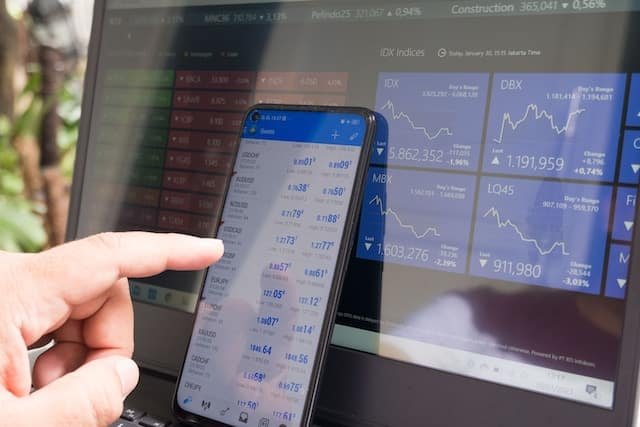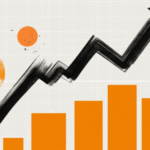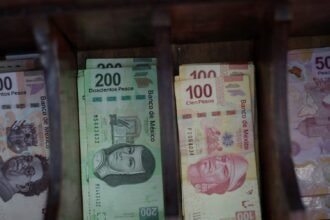- The structure and hierarchy of currency markets
- Institutional players: The market movers
- 1. Central banks: The policy makers
- 2. Commercial and investment banks: The market makers
- 3. Hedge funds and asset managers: The professional speculators
- Commercial entities: Meeting real-world currency needs
- Retail traders: The growing force in forex
- How business leaders can navigate currency markets
- Navigating the complex forex ecosystem: Final thoughts
The foreign exchange market, with its daily turnover exceeding $6 trillion, represents the largest and most liquid financial marketplace in the world. Understanding who participates in this massive market is crucial for business leaders, as currency movements can significantly impact international operations, investment returns, and risk management strategies. The various Forex market participants range from powerful central banks to individual retail traders, each with unique motivations and influence on global currency values.
The structure and hierarchy of currency markets
Unlike stock exchanges, the Forex market operates as a decentralized, over-the-counter network where participants trade directly with one another without a central exchange. This creates a hierarchical structure where different players have varying levels of market access and influence on price movements.
At the apex of this structure sits the interbank market, where the world’s largest financial institutions trade directly with each other. As the primary platform where major financial institutions exchange currencies, it not only sets prevailing trading trends but also plays a crucial role in maintaining market liquidity. This foundational position underscores its importance in supporting the overall stability and functionality of the global currency market.
The decentralized nature of Forex trading means that quotes can vary between brokers and other entities, creating a complex web of price information that participants must navigate. However, this same characteristic provides flexibility and 24-hour market access, attracting diverse participants from around the globe.
Currency markets operate across multiple instruments, including spot transactions for immediate delivery, forwards and futures for future delivery dates, and options that provide the right but not the obligation to trade at specified prices. Each segment attracts different types of participants with varying objectives, from hedging to speculation.
Institutional players: The market movers
1. Central banks: The policy makers
Central banks are among the most influential participants in the Forex market, wielding significant power through monetary policy decisions and direct market interventions. Institutions like the Federal Reserve, European Central Bank, and Bank of England can move markets dramatically through interest rate changes, quantitative easing programs, or direct currency purchases and sales. For instance, the People’s Bank of China recently raised gold import quotas to address rising gold demand and curb the yuan’s rally amid market volatility.
These official institutions typically don’t trade for profit but aim to implement monetary policy, manage foreign reserves, or stabilize their currencies. Their statements and policy signals are closely monitored by other market participants for clues about future currency movements.
2. Commercial and investment banks: The market makers
Major global banks like JPMorgan Chase, Barclays, and Deutsche Bank form the backbone of the Forex trading environment. They serve dual roles: executing client orders and trading proprietary positions. These banks function as market makers, providing liquidity by quoting both buy and sell prices and profiting from the spread between them. They facilitate access to the Forex market for corporations, institutional investors, and, through their retail divisions, individual traders.
The interbank market operates primarily through electronic platforms like EBS (Electronic Broking Service) Market and Reuters Matching, with specialized liquidity for different currency pairs. For example, EUR/USD, USD/JPY, and EUR/CHF are more liquid on EBS, while GBP/USD, USD/CAD, and AUD/USD find better liquidity on Reuters platforms.
3. Hedge funds and asset managers: The professional speculators
Institutional traders, including hedge funds, mutual funds, pension funds, and asset managers, account for approximately 30% of Forex market volume. These sophisticated investors employ various strategies, from momentum trading to carry trades that exploit interest rate differentials between currencies.
These institutional players often have better access to market information and can execute trades at more favorable prices than retail participants. Their activities add liquidity to the market while also potentially amplifying trends through herding behavior during major market moves.
Commercial entities: Meeting real-world currency needs
1. Multinational corporations: The hedgers
Large international businesses engage in currency markets primarily to facilitate global operations rather than for speculative purposes. For example, a German automaker repatriating profits from US sales needs to convert dollars to euros.
These corporations use various hedging instruments to protect against adverse currency movements that could damage profitability. Forward contracts allow them to lock in exchange rates for future transactions, providing certainty for budgeting and financial planning.
Treasury departments at multinational firms often employ sophisticated strategies to manage currency exposure, sometimes partnering with platforms like markets4u to access competitive rates and risk management tools. The collective activity of these corporations adds significant volume to the Forex market, particularly in currency pairs relevant to major trading relationships.
According to a recent Reuters report, corporate hedging activities have increased substantially in recent years as global economic uncertainty has heightened awareness of currency risks. This trend demonstrates how business operational needs drive meaningful participation in currency markets beyond purely financial motivations.
2. Money transfer companies and payment processors
A growing segment of Forex market activity comes from specialized money transfer companies that facilitate cross-border payments for businesses and individuals. These firms have disrupted traditional banking channels by offering more competitive exchange rates and faster service.
Companies in this sector execute enormous volumes of currency transactions to support international commerce, remittances, and travel expenses. Their business models rely on efficient currency management and the ability to process transactions at scale while managing exchange rate risk.
The rise of financial technology has accelerated this trend, with digital platforms streamlining cross-border payments and currency conversions. This evolution has democratized access to favorable exchange rates previously available only to large institutions.
Retail traders: The growing force in forex
1. Individual investors and speculators
The retail trading segment has experienced explosive growth with the advent of online trading platforms. These individual traders collectively contribute significant volume to the market despite their relatively smaller transaction sizes.
Retail traders typically access the market through brokers that connect to larger liquidity providers. Their motivations vary widely, from short-term speculation to longer-term investment strategies based on economic fundamentals or technical analysis.
The democratization of Forex trading has created both opportunities and challenges for retail participants. While technology has lowered barriers to entry, these traders often face wider spreads and less favorable execution than institutional players. Educational resources and risk management tools offered by platforms like markets4you have become crucial for this segment to navigate market complexities successfully.
Despite these challenges, retail participation continues to grow globally, with traders attracted by the market’s liquidity, 24-hour accessibility, and potential for profits in both rising and falling currency environments.
2. Retail brokers: The gateway providers
Retail Forex brokers serve as critical intermediaries, providing individual traders with access to the broader currency markets. These firms offer trading platforms, market analysis, educational resources, and customer support to facilitate retail participation. This makes it easier for traders to conduct technical analysis and identify common signals such as the bull flag pattern, so they can make informed decisions.
Brokers typically generate revenue through spreads, commissions, or a combination of both. The competitive landscape has driven continuous innovation in trading platforms, risk management tools, and educational offerings to attract and retain clients.
The regulatory environment for retail Forex trading varies significantly across jurisdictions, with countries like the UK, US, Australia, and Japan implementing robust frameworks to protect retail participants. These regulations address issues like leverage limits, negative balance protection, and transparency requirements.
How business leaders can navigate currency markets
Understanding the diverse Forex market participants and their motivations provides valuable context for business leaders making decisions related to international finance. Whether managing supply chain costs, planning foreign investments, or protecting profit margins, currency considerations play a vital role in global business strategy.
Here are key considerations for businesses engaging with currency markets:
- Risk Assessment: Evaluate your company’s exposure to currency fluctuations across operations, investments, and financing activities
- Hedging Strategy: Develop appropriate hedging approaches based on your risk tolerance and market outlook
- Partner Selection: Choose financial partners with strong execution capabilities and competitive pricing
The impact of currency fluctuations on international business can be profound. Changes in exchange rates affect the real cost of imported goods and services, while currency strength or weakness influences price competitiveness in global markets. Multinational companies must navigate exchange rates when transferring profits between subsidiaries, and foreign assets and operations change in value as currencies fluctuate. Additionally, companies with foreign currency debt face changing repayment costs as exchange rates move.
Navigating the complex forex ecosystem: Final thoughts
The Forex market’s massive size and liquidity reflect the diverse array of participants that engage in currency trading. From powerful central banks shaping monetary policy to individual traders seeking profits, each category of participant contributes to the market’s dynamic nature.
For business leaders, understanding these market participants provides context for interpreting currency movements and developing effective strategies for managing international financial activities. As global business becomes increasingly interconnected, currency considerations will remain a fundamental aspect of strategic planning and risk management.
While institutional players continue to dominate trading volumes, technological advances and financial innovation have democratized access to currency markets. This evolution creates new opportunities for businesses of all sizes to engage with the Forex ecosystem more effectively through platforms like Markets4you that bridge the gap between retail and institutional market access.
By recognizing the motivations and influence of various Forex market participants, business leaders can make more informed decisions about currency exposure, hedging strategies, and international financial management in an increasingly complex global economy.
The above information does not constitute any form of advice or recommendation by London Loves Business and is not intended to be relied upon by users in making (or refraining from making) any finance decisions. Appropriate independent advice should be obtained before making any such decision. London Loves Business bears no responsibility for any gains or losses.





















